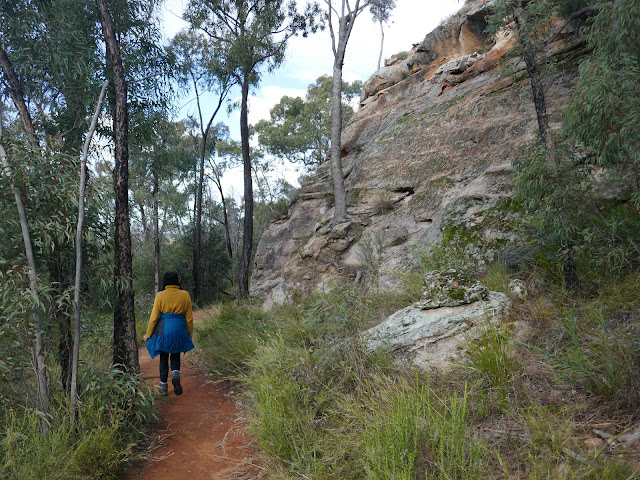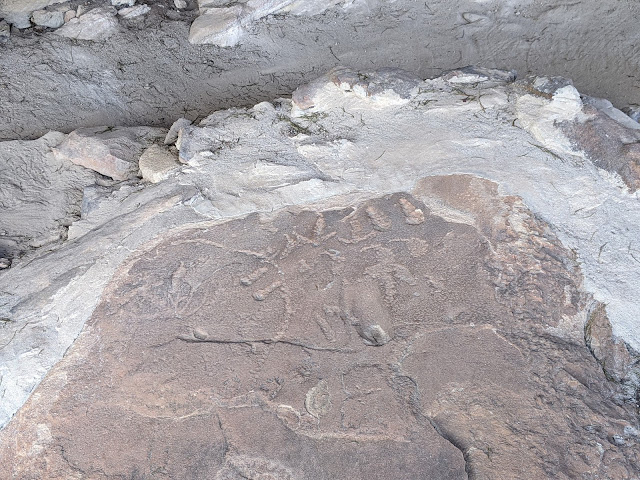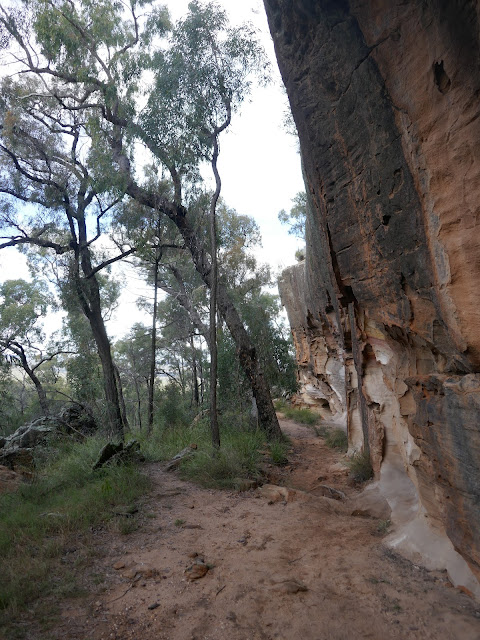Pilliga Caves 13-06-2021
This map was created using GPS Visualizer's do-it-yourself geographic utilities.
Please wait while the map data loads...
Route: Sandstone Caves Track
Date: 13/06/2021
From: Yanimba Trail Car Park
Parking: Yanimba Trail Car Park
Start Point: Yanimba Trail Car Park
Finish Point: Yanimba Trail Car Park
Region: Pilliga National Park
Route length: 1.8km
Time taken: 00:40
Average speed: 3.1km/h
Ascent: 42m
Descent: 36m
Points of Interest: Axe grinding grooves, petroglyphs, sandstone caves
Just north of Warrumbungle National Park is Pilliga Forest, the largest native forest west of the Great Dividing Range. It is home to a series of remarkable sandstone caves that are a special place for the Gamilaraay people, one of the largest indigenous nations in Australia. They co-manage the Tannawanda Caves together with the National Parks Service.
A short but informative loop path does a circuit of the caves allowing you to explore some of the rich heritage of the area. I would recommend doing the track in a clockwise direction to save the most impressive caves towards the end of the hike.
 |
| The sandstone caves track |
 |
| Approaching the escarpment that is home to caves |
The clockwise circuit passes some of the smaller caves first, includes one with some well preserved axe-grinding grooves, protected behind a metal fence. Axe-grinding grooves are oval-shaped indentations in sandstone outcrops. Aboriginal people made the grooves when they shaped and sharpened stone axes by grinding them against the sandstone. Places of Aboriginal axe-grinding grooves are rare and they provide valuable information about how stone tools were made.
 |
| The first of the caves |
 |
| Most of the sandstone has been eroded by the wind |
After the lookout, the circuit reaches the larger, more impressive caves, some of which feature multiple chambers and openings. They are more than just simple overhangs and are surprisingly spacious and extensive. It's easy to see how while families could thrive in such a location.
 |
| Beautiful shapes in the first of the large caves |
 |
| Sandstone caves |
 |
| Sandstone caves |
 |
| Sandstone caves |
 |
| Sandstone caves |
 |
| The largest of the sandstone caves |
 |
| Multiple chambers within the sandstone caves |
 |
| The largest and most impressive of the caves |
 |
| Sandstone caves |
 |
| Sandstone caves |
 |
| Sandstone caves |
 |
| The multiple chambers of the largest sandstone cave |
After the largest of the caves, the track passes a few smaller ones, one of which contains some rock art - etches of kangaroo and emu feet. Rock art is the oldest surviving human art form and researchers estimate that there are more than 100,000 significant rock art sites around Australia. Specifically, these are petroglyphs, created by removing rock through pecking, hammering or abrading in order to leave a negative impression. |
| Rock art, including emu feet and kangaroo feet |
 |
| The rock art can be found in one of the final caves |
The rock-art cave is one of the last ones on the circuit before the track makes its way back to the car park. This is a great hike with a lot to see along the short 1.8km track. The beautifully shaped caves are a photographers dream come true and well worth seeking out.






















No comments :
Post a Comment